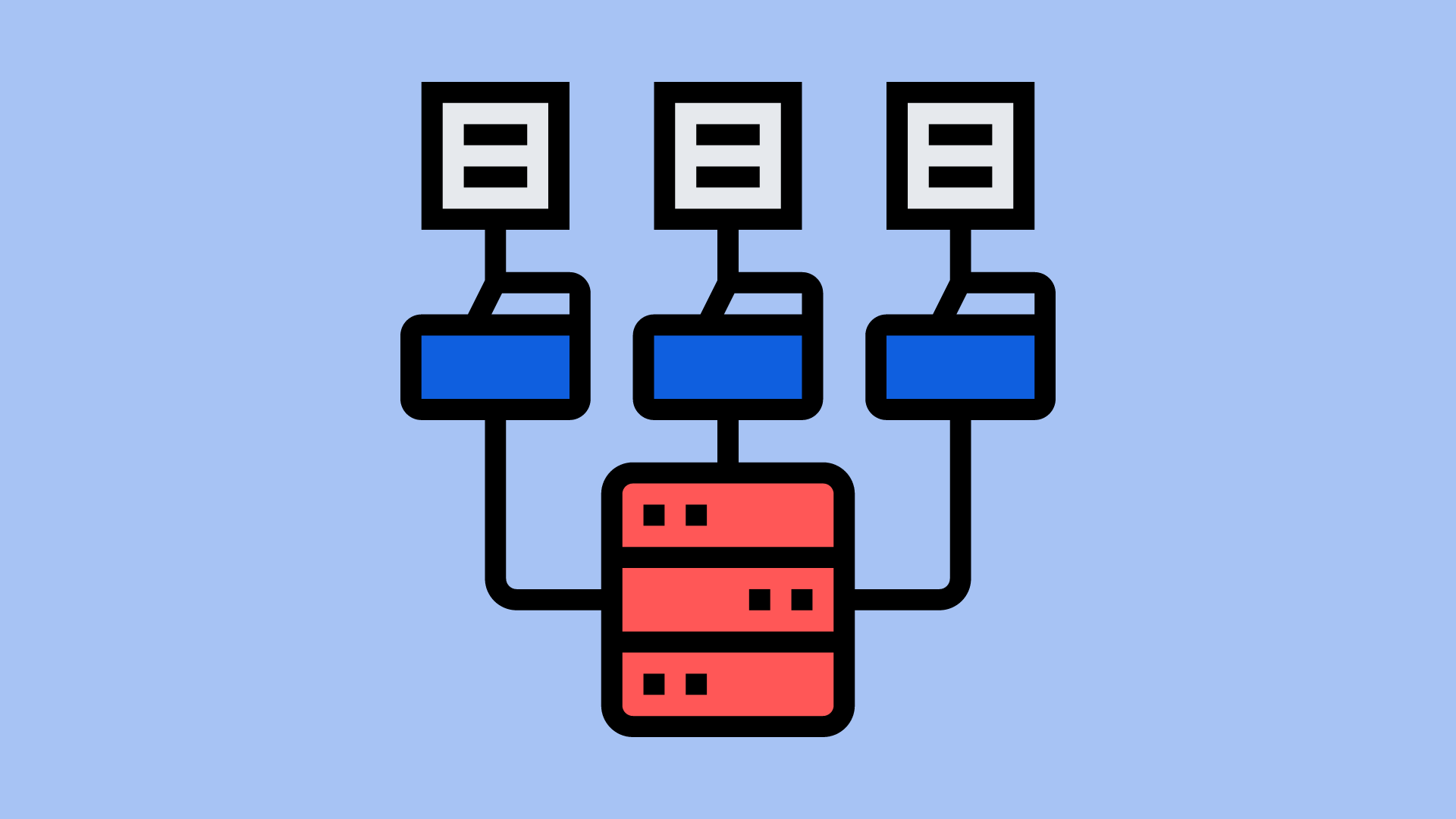Web development is a constantly evolving field, and developers must keep up with the latest version tools and techniques. Version control is one of the most important aspects of web development, and we'll go over what it is and why it's so important in this blog.
Version control is a technique that tracks changes to code over time, allowing developers to collaborate on a project and revert to previous versions as needed. Version control is an essential tool for any web developer, whether they are working on a small website or a large-scale web application.
In this blog, we'll go over the fundamentals of version control and how to use it effectively in your web development projects. We'll also discuss the various version control systems available and how to select the best one for your requirements. This guide will provide valuable insights to help you stay ahead of the game, whether you're a beginner or a web development expert. So, if you're ready to advance your web development skills, let's get started!
Definition of version control
What is a version control?
Version control is a software development technique that lets multiple developers work on the same set of source code files. Each time they save a file, the version control system automatically saves a copy of the previous version, known as a "checkpoint."
This way, if one developer accidentally deletes or overwrites another developer's work, or if someone accidentally erases all of the files, the most recent copy can be restored.
Version control systems also let you see who changed what and when; roll back to previous versions; compare different versions (like when you're updating an existing website); and collaborate with other developers on projects that have grown too large for one person to handle alone. Version control also helps in case something goes wrong with your website - for example, if it stops working because of server issues or if there is malware on it. If you have a source control system in place, you can restore the site to its last known good state and then use that as your starting point for fixing things. This is especially important if you build websites for clients - they are going to need an easy way to get their website back up and running if something goes wrong.
Importance of version control in web development
Software developers and web developers are always in search of effective tools to keep their work organized. Version control is one of the most useful tools that software developers use, especially if they are involved in large software projects. It’s an important tool that helps software developers manage their projects. It is a system that keeps track of the changes made to files and allows users to revert back to previous versions if they need to.
Assume you're working on a website with a team of developers. Everyone is working on a different feature. By accident, one developer edited another developer's work and pushed it to production. The website is currently down. You're attempting to identify the problem and eventually locate it. However, you cannot go back in time and prevent this from happening. What if you could at least go back to the previous version of the source code? This is where version control comes in handy.
With version control, the code base can be managed and tracked easily. This means that any changes made will be recorded and can be traced back to see who made them and when they were made. It also helps to avoid conflicts between team members as each person's changes are kept separate from each other's changes.
Version control systems are also useful for people who need a quick way to find the most recent version of a file. If you've changed a document several times over the course of a week and want to see what it looked like at the beginning, it can be difficult to find out which version is the most current. A version control system makes this process much easier by storing multiple versions of files in one place so they're easy to access and compare.
The importance of having version control cannot be overstated as it allows developers to work independently on the same project without fear of messing up each other's work or stepping on each other's toes.
The Basics of Version Control
What is a version control system
Version control is a system that tracks changes to files and allows a user to revert to older versions of the file.
It is used to maintain historical versions of files, documents, and websites. This allows users to track changes to a document or file over time. Version control can also be used to coordinate work on multiple versions of a project by multiple developers.
Version Control Systems (VCS) is designed specifically for software development teams to manage changes to codebases in a collaborative environment. There are many different types of VCS systems available, but they all have some basic concepts in common.
Version control systems are especially useful for collaborative software projects because they allow multiple users to work on the same files at the same time without overwriting each others' changes. Many source control systems allow users to merge conflicting changes into one final document so they don't have to worry about losing any of their changes when other people edit the same document at different times.
Version control systems are often used in software development, but they can also be useful for non-technical tasks. For example, if you’re writing a book or blog post, it’s helpful to have an easy way to track changes over time. You might even use one while working on a large project with other people—for example, if you’re collaborating on a shared document or spreadsheet with others and need a way to keep track of what everyone is doing.
How does version control work
Version control is a system that records changes to a file or set of files over time so that you can recall specific versions later. It's most often used in software development, but it has applications beyond that. The information stored in a version control system can be used to restore older versions of files and documents, compare versions, and collaborate with others on projects.
Version control systems are typically used by developers who are working on large projects and need a way to track their work. A version control system provides an easy way to see what changes have been made over time, so you can do code review on the history of your project and see how it evolved from day one.
Here's how it works: when you make changes in your project files directory, those changes are stored in a repository — usually with a version control system (VCS). When you want to share your work with someone else, you can send them the codebase from that repository. When they make their own changes, those changes will be stored separately from yours, so that both of your versions can be compared later on if necessary.
When you go back to an older version of your codebase, it's often called "checking out" that version from the repository. This creates a new version of the codebase on your machine that has all its files in the same state they were when you checked them out — meaning they may not be up-to-date with any changes made since then.
Different types of version control systems
There are two types of version control systems, each with its own advantages and disadvantages:
1. Centralized Version Control Systems (CVCS)

These systems keep all the files in a central repository, where only one person can work on them at a time. With centralized source control, only one person can edit a file at a time; others must wait for it to be checked out before they can work on it.
2. Distributed Version Control Systems (DVCS)

Distributed Version Control Systems (DVCS) are a type of version control system (VCS) that are designed to allow several developers to work on the same codebase at the same time. This means that multiple people with multiple computers can be working on the same project in parallel, and when they push their changes to the server, it will merge them together.
The most popular DVCS is Git, which was created by Linus Torvalds in 2005.
Benefits of Version Control Systems
Improved collaboration
Version control systems can help to improve collaboration and communication within a software team. Through version control, it’s easy to see which changes have been made by whom and when. This can help to avoid instances where multiple people make different changes to the same file, causing confusion over who should be responsible for which change.
Ease of managing changes
Version control systems make it easy to manage the changes that have been made to a project. This can be useful when you need to go back and see what has changed since a certain point in time, or if you want to revert back all of your changes at once. Version control systems can help to manage changes by providing a central database where all files and their associated revisions are stored. They also enable you to view the changes that have been made over time, which means it’s easy to see how a document has evolved from its original format into its current state.
Ability to revert to previous versions
If you make a change that you later regret, it’s easy to revert back to an earlier version of the file. This is especially useful for documents that have been edited over time by many different people, as it prevents any one individual from inadvertently changing the formatting or content of a document.
This feature is also useful for situations where you want to try out a new format or layout for your document, but want the ability to go back if it doesn’t work out. Version history helps prevent users from making changes that cannot be undone because they are unaware of how their actions might affect other people working on the same document.
Enhanced security and backup
Version history is a useful feature for anyone who wants to protect their documents from being inadvertently changed. It also helps make sure that important files don’t get lost in case of a computer crash or other disaster. You can use version history to create a backup of your files and then restore them if there is a problem.
With version history, you can see the date and time that each version was saved. You can also restore a previous version of a file or folder if you need to do so. If you want to make sure that your files are secure, then this tool will help.
Reasons to Use Version Control
Better organization of code
As a developer, you’ll find that it makes your code much easier to manage. You can go back in time and see what changes have been made over the course of development, and quickly revert changes if necessary. Version control is essential in any large project and can help you avoid rewriting existing code. It also makes it easy for your team members to work together on the same project without stepping on each other’s toes.
Increased productivity
Version control allows you to focus on coding without having to worry about making sure your changes don’t conflict with someone else’s. This frees up your brain power and makes it easier for you to get things done quickly. You can also get feedback from your team members more easily and make decisions together based on their input.
Improved collaboration and teamwork
Version control helps you work with your team members more easily. You can discuss issues and resolve them quickly without having to worry about stepping on each other’s toes. This makes it easier for your development team to collaborate effectively and move projects forward quickly.
Things to Look For in Version Control Software
Version control software is a must-have for any development team. It can improve collaboration and productivity, but it’s not always easy to choose the right one. If you are looking to add version control to your development workflow, here are some things to look for:
User-friendly interface
Version control software is a tool for developers, so it needs to be easy for them to use. If it’s hard to configure or difficult to navigate, programmers won’t use it. The version control software can be intimidating at first. But if you find one that has a user-friendly interface, you’ll be able to get up and running quickly. It will also make it easier for your team members to adopt the software as well.
Integration with other tools
Many version control platforms integrate with other tools, such as issue trackers and wikis. This makes it easier for developers to use the software in their workflows. If you want to add version control to your development workflow, look for a tool that supports these integrations. If it’s hard to integrate version control with other software tools in your development workflow, you’ll have a harder time getting the most out of it. For example, you might need to use your version control software alongside code editors like Visual Studio and Sublime Text in order to view changes and roll back versions of your codebase.
Good support and documentation
Good documentation is also important. If you’re not sure how to use a tool, it can be frustrating if there’s no documentation available for you to refer to. You should be able to find clear instructions on how to install and configure your version control software, as well as guidance on how it works with other software tools in your development workflow.
A good example of this is GitHub’s documentation page, which provides a variety of guides and tutorials that cover the basics of using Git as well as more advanced features. In addition to providing documentation, it also offers support via email if you run into any problems with your version control software.
Flexibility
The version control software can be used in many different ways, and there are many different types of repositories. This means that you should be able to find a version control system that works best for your needs. For example, Git is great if you want to host your code on GitHub so that others can collaborate with you online.
Affordable pricing
Version control software is often free to use, but some systems have a paid version that offers additional features. For example, GitLab offers both a free and paid version of its product. The paid version allows you to host your code on the GitLab server rather than using GitHub or Bitbucket, which can be helpful if you want more control over your project.
Conclusion
Finally, mastering version control in web development is critical for ensuring that your projects are well-managed and organized. The advantages of using version control software are numerous, including easy collaboration, backup, and recovery of previous file versions, tracking changes, and facilitating project management.
Version control is a key component in modern software development, especially with the emergence of cloud technologies and distributed software teams. It provides an efficient workflow, reduces the risk of errors, and improves code quality by facilitating code reviews and testing.
Choosing the best version control software for your team can be a daunting task, but it's important to consider factors like ease of use, security, collaboration features, and integrations with other tools. Popular version control tools include Git, Subversion, and Mercurial, each with its own strengths and weaknesses.
In conclusion, mastering version control in web development is a crucial step toward becoming a more efficient, organized, and productive developer. It's not only about managing code changes but also about streamlining the entire development process. With the right tools and a good understanding of the principles of version control, you can take your web development projects to the next level.
Apr 3, 2023
